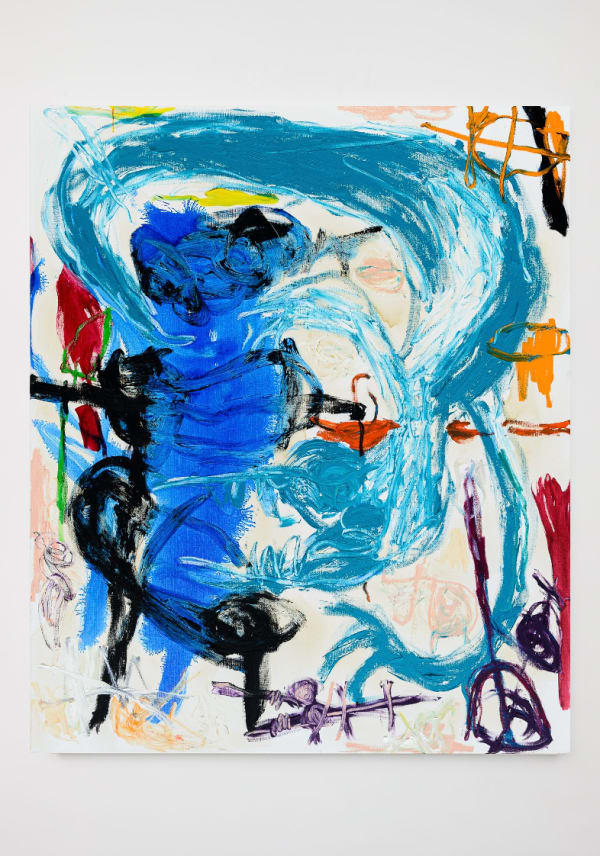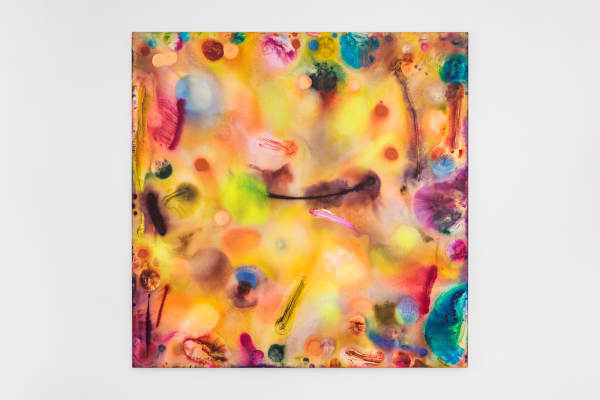Never the right time: Katarina Caserman - Julian Farade - Emma Stone Johnson - Nina Kintsurashvili - Zoe Mcguire - Kaifan Wang - Stanley Whitney
Previous exhibition
Text
“Between the desire and the spasm
Between the potency and the existence
Between the essence and the descent
Falls the Shadow”
T.S. Eliot
French structuralist Claude Levi-Strauss argued the establishment of cultural repetition and the reinvention of cultural constructs in the manifestation of myths, in which stories are layered within kernels of identical meanings that are redefined within different narratives. This structuralist explanation of cultural repetition turns on the question of the ambivalence that characterizes the phenomenon of visual abstraction. The myth itself is a response to a cultural contradiction that cannot be resolved but only returned to over and over. This analogy with the myth’s compulsion to repeat itself permits two aspects of painterly abstraction to come into focus at once.
Firstly, it sheds light on the form of the abstract paradigm as a vehicle of serialization in which the artist repeats the same sujet in a strain of marginally adjusted replications. Secondly, it pronounces the fact that the underlying simplified form will create an internal contradiction between the subject being abstracted and the method of abstraction as a derivation from the subject. However, these paradigms are inherently out of time since abstract art is constantly haunted by its own temporality. All forms of narrative deriving from its domain are being established by a clear simultaneity. Abstract art’s involvement with time consists of a historical dimension that supports abstraction as a specific project, marking every painting as a development rather than an independent object. In conjunction with this, a progressive series of production is being established which derives through a historical conception that each painting defines a total break from anything that could have come before it and therefore referencing not a linear development, rather a field of developments independently identifying themselves over time. In this context, abstraction doesn’t repeat but rather develop from a continuous paradigm based on formal principles.
In the context of Stanley Whitney’s work, which gives a primacy to a direct experience of colour through its gridded structures, all presented painters developed an independent and distinct visual language within the formal paradigms of abstraction. However, these stylistic choices trying to formulate a system to describe intangibility did neither start nor end at a specific point in time and are to be seen as constant individual confrontation by each artist based on the principle of simultaneity of abstract art. Therefore, it becomes intriguing to look at current developments in abstract painting from a historic perspective rather than isolating them within their given context to experience the significance of how the endless continuity of abstraction repeats, destructs and redefines itself over time.
Installation Views
Works










